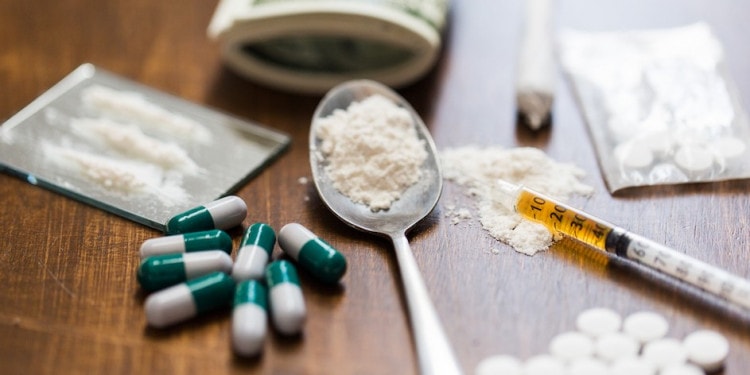We have all become too familiar with the COVID-19 pandemic and its many detrimental effects, from mortality and morbidity to huge economic losses. One population facing out-of-the-ordinary challenges and complications in our pandemic times are substance use disorder individuals (SUDs). Here we will review what we know about how they fare and what can be done. We are limiting our investigation to SUDs who are habitual opioid users.
Why focus only on opioids? Because opioids are regulated and (mainly) produced, distributed, and sold in public domains such as pharmacies and drugstores in most countries. Most importantly, they are generally provided in amounts based on a licensed prescriber’s instructions. As a result, they should be distinguished from addictive substances which are largely sold sub-rosa (such as heroin) and would require separate treatment, you can click here to find a treatment.
The Opioid Backdrop
How then did opioid overuse become an epidemic? In what countries has it turned into an epidemic at its worst? Where is it best contained? What are the factors which separate those good and bad effects?
The World Health Organization provides a comprehensive overview of what opioids are, how to deal with opioid overdose and why they can be legitimately considered beneficial by health professionals throughout the world. In brief:
- The term ‘opioids’ includes compounds that are extracted from the poppy seed as well as semi-synthetic and synthetic compounds with similar properties that can interact with opioid receptors in the brain.
- Opioids are commonly used for the treatment of pain, and include medicines such as morphine, fentanyl and tramadol.
In short, the good news is that properly administered and controlled and used over a fixed period, opioids effectively alleviate many sources of pain. Learn more from the New You Drug and Alcohol Association. website at the link.
The bad news is that well before COVID-19 there was an opioid epidemic.
In treating pain, opioids bind to receptors in the central and peripheral nervous systems, but the effect may sometimes induce intense euphoria, so that even after the initial pain has been mostly relieved, individuals continue their use afterward, with the intention of recreating that first high. Succinctly put:
“Opioid use disorder and opioid addiction remain at epidemic levels in the US and worldwide, you can learn here more about this topic. Three million US citizens and 16 million individuals worldwide have had or currently suffer from opioid use disorder (OUD). More than 500,000 in the United States are dependent on heroin. The diagnosis of OUD is made by meeting two or more of the eleven criteria in a year time period.”
Opioids in a Sampling of Countries and Regions
- A Country Among the Worst: The United States
The United States possesses a persistent appetite for the prescription of opioid medications. In 2015, 91.8 million individuals in the United States used prescription opioids. In the U.S. opioid addiction afflicts individuals from all socioeconomic and educational backgrounds. Four million people admit to the nonmedical use of prescription opioids. If you need help overcoming this condition, visit Klinic.care.
One can look to many reasons, but among them must be freewheeling marketing reflected in one company’s plea agreement, acknowledging it “decided to concentrate its marketing efforts on practitioners who it knew were prescribing opioids that “were not for a medically accepted indication, were unsafe, ineffective, and medically unnecessary, and/or were diverted for uses that lacked a legitimate medical purpose.”
The reason companies felt confident in doing so was that for decades U.S. Food and Drug Administration regulatory authorities lifted initial limitations on use and opened opportunities for distribution. The result is dramatically described in the New York Times article “He Lost his Son to an Overdose. Now He’s Taking on the ‘Top Drug Cop’”.
This underscores the need for caution in selecting the next head of the Food and Drug Administration, which will follow the appointment of the U.S. Secretary of Health and Human Services (HHS).
There are promising indications the Biden Administration recognizes the importance of this issue. On 21 February, a well-known researcher and practitioner in this field, Dr. Rachel Levine was nominated to be Assistant Secretary HHS (with the press highlighting the fact that she is transgender). At the time of writing, the Senate is deadlocked on Xavier Becerra, a Democrat and lawyer serving as the current attorney general of California and Biden’s nominee for the post of HHS Secretary, though he is expected to be nominated next week.
These HHS management and independent agency appointments will tell the future direction of SUD oversight in the United States.
- A Western Country That May Be Doing Better: Italy
Opioid overdoses in the United States kill 27 times the number of people per 100,000 who die in Italy, another country that has suffered heavily from COVID-19.
The reasons are complex and difficult to attribute to any single cause or action. That said, the Italian Government did initiate an experimental program, “Take Home Naloxone”, which may be one reason. Naloxone is an antidote to opioids that can reverse the effects of an opioid overdose if administered in time. Naloxone has virtually no effect on people who have not taken opioids.
The purpose was to increase Naloxone availability and distribution—making its cheaper (injectable) form available over the counter to those most likely to have need., Much more study needs to be done to understand where this program fits into the reasons Italy has such lower mortality rates among opioid users.
Other countries have taken note and in several (Australia, Canada, the U.K., and Ukraine) have recently introduced naloxone as over-the-counter medication and have also started proactive dissemination in communities as is being done in Italy.
- A Regional Perspective with Mixed Results: Latin America
Demand for opioids varies widely in this region because of the social and geographic characteristics of different countries.
For instance, the increase in the marketing and use of opioids in Brazil can be attributed to public and professional demand for better handling of pain-related conditions.
Meanwhile, in Mexico, the demand appears to have a different source: The highest concentrations of people who use injectable drugs are found in the areas that border the United States (i.e., Tijuana and Chihuahua), suggesting that the vicinity of American users plays a role.
COVID Pandemic Impact on Opioid Use and Other SUDs
It has been a full year since COVID has taken hold globally, and therefore little enough time to scientifically in-depth gauge its impact on opioid use and other SUDs.
While it is still early to pass a final judgment, it would appear that the COVID pandemic has had the effect to increase the number of overdose deaths: The CDC recorded 81,003 overdose deaths in the 12 months leading up to June 2020. That’s the most ever recorded in the US in a 12-month period.
Pre-pandemic, the opioid crisis was getting more attention and government funding. In 2018, overdose deaths fell for the first time in a decade. But, reportedly, addiction treatment programs have been cut back as health systems have become both cash-strapped and redirected to address COVID.
Many of the root causes for opioid use are initial pain, which, when relieved, is often accompanied by a pleasurable euphoria. As a result, the desire to continue opioid use is not lessened. On the contrary, it has tended to maintain it. This is similar to other SUDs when avenues offering the most productive self-worth feelings are closed off or limited, and as a result, a greater dependency on any means to feel better is developed.
From the supply side, access to the substance for a SUD may well be impacted by the pandemic, whether at the point of production or throughout the delivery chain.
We know that there is enormous flexibility for illicit marketers to quickly constitute themselves as suppliers of last resort. Further, the attention of the policy community to address the opioid and other addiction problems in an intensive and concrete manner has no doubt been diverted to deal with the more pressing myriad of COVID-related issues.
Post-COVID Pandemic Outlook for SUD Treatment: The Rise of Telehealth
Improbable as it may sound, the COVID pandemic could lead to improvements in SUD treatment with the expanded use of telehealth from a reliable Telehealth Network Provider, an effective tool that has been growing since its inception 50 years ago. Many psychiatric associations around the world have been active in advancing the field of telepsychiatry, recognizing it offers multiple pathways and benefits in widening SUD outpatient care.
First, from the patient’s perspective, there is no need to make face-to-face appointments with conceivably waiting list delays, travel to and from the location, the economic and social costs resulting from time taken away from work, childcare, or other responsibilities.
In COVID pandemic times, the advantage of telehealth over face-to-face visits is obvious as the risk of COVID-19 exposure from home-to-inpatient setting-to-home is fully resolved.
In short, there are significant factors that may create inherent reluctance for follow-up outpatient treatment.
Second, from the psychiatric staff perspective, the administrative steps before the withdrawal management process can begin are very time-consuming. And as will happen, cancellations may occur and they inevitably result in unused professional staff time. Time lost by the staff psychiatrist, psychiatric nurse practitioner, and support personnel cannot be recaptured, and in turn, generates more effort at rescheduling.
Third, from a health system perspective, direct and indirect cost savings are significant, resulting from reducing repetitive paperwork such as those related to multiple steps of office check-ins. The productivity of administrative and professional staff is also increased as they are better able to deal with unexpected absenteeism. More efficient accounting and related services, greater efficiency of the full panoply of SUD human resource providers, and of particular importance during the current crisis, the ability to offer COVID-19-safe treatment means greater comfort by both patient and patient treatment staff.
What Could Be Done to address SUDs?
Substance Use Disorders are a global concern. The current appropriate focus on many dimensions of COVID-19 opens a window of opportunity to better understand its impact on SUDs and how new techniques can be of benefit, in particular telehealth.
Significant comparative research should look into different socio-economic settings in terms of how telepsychiatry performs or could perform relative to face-to-face SUD outpatient treatment.
In sum, future research funding is critically needed to focus on improving effective in- and outpatient treatment strategies for substance use disorders, tailored to different population-based programs in high COVID-19 affected countries.
George Kolodner, M.D. was a major contributor to this article. He is the Founder and Medical Director, Kolmac Outpatient Recovery Centers, Clinical Professor of Psychiatry, Georgetown University School of Medicine.
Editor’s Note: The opinions expressed here by Impakter.com columnists are their own, not those of Impakter.com Featured Image Credit: Columbia Launches New Center to Combat Substance Use Disorders, May 2020














